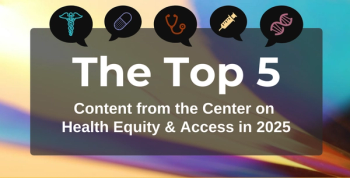
White Blood Cell Profile Linked to Greater Breast Cancer Risk
What can be done to further delineate the risk factors associated with breast cancer to increase prevention efforts across the board? The key may lie in the white blood cells that circulate in the blood, particularly leukocytes and monocytes.
What can be done to further delineate the risk factors associated with
A group of researchers, led by Jack Taylor, MD, PhD, head of the NIEHS Molecular and Genetic Epidemiology Group, were looking to more clearly define the immune response among women as it related to breast cancer tumor response, as well as cancer progression and survival. They investigated the amounts of 6 subtypes of white blood cells, or leukocytes, that appear in our blood: B cells, natural killer cells, CD8+ and CD4+ T cells, monocytes, and granulocytes.
“Peripheral blood leukocyte profiles measured after diagnosis may also be associated with prognosis, but whether leukocyte subtypes are altered before diagnosis remains largely unexplored,” the authors pointed out. “Prospective epidemiological studies suggest that women with higher overall leukocyte counts, or certain autoimmune disorders, may be at increased with of breast cancer.”
Their cohort of 2774 patients from the United States and Puerto Rico was recruited from among the 50,884 participants in the
The investigators obtained, via consent, blood samples from all of the study enrollees at baseline, following them from July 2014 to October 2016, with data analyzed in April 2019.
“The fact that we got both short-term and long-term signals of breast cancer risk suggests there may be a dynamic relationship between circulating immune cells and cancer,”
These results pointed to both short- and long-term risks, depending on the leukocyte subtype. Circulating monocytes and B cells, respectively, were shown to have these risk connections.
According to the data, the lower the monocyte level among premenopausal women, the greater the risk of having breast cancer diagnosed (hazard ratio [HR], 0.75; 95% CI, 0.57-0.99; P = .05). Also among this group, there was a significant association between B-cell level and breast cancer development (HR, 1.38; 95% CI, 1.05-1.82; P = .02).
For all the women in the study, however, their likelihood of receiving a breast cancer diagnosis depended on the time from when they provided their blood sample in relation to levels of B cells and monocytes. There was a greater risk of receiving a diagnosis within 1 year if there were lower proportions of monocytes in the blood (HR, 0.62; 95% CI, 0.43-0.89; P = .01). However, a higher B cell proportion meant the risk of developing breast cancer 4 or more years down the road was elevated (HR, 1.38; 95% CI, 1.15-1.67; P =. 001).
“Our findings suggest that women’s circulating immune cell profiles may change in the years leading up to a breast cancer diagnosis,” the authors pointed out. “we found that the relative proportions of circulating leukocyte subtypes appeared to be associated with the risk of breast cancer months to years after blood collection.
Reference
Kresovich JK, O’Brien KM, Xu Z, Weinberg CR, Sandler DP, Taylor JA. Prediagnostic Immune Cell Profiles and Breast Cancer. JAMA Netw Open. 2020:3(1):e1919536. doi: 10.1001/jamanetworkopen.2019.19536.
Newsletter
Stay ahead of policy, cost, and value—subscribe to AJMC for expert insights at the intersection of clinical care and health economics.








































